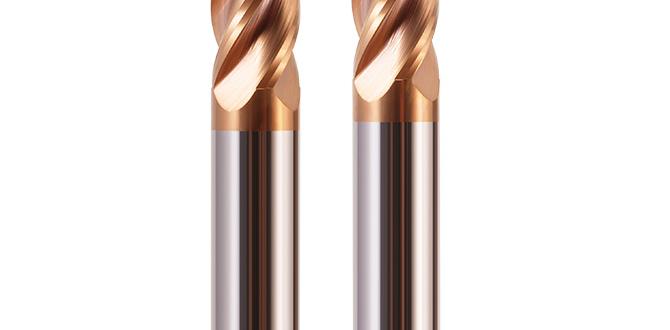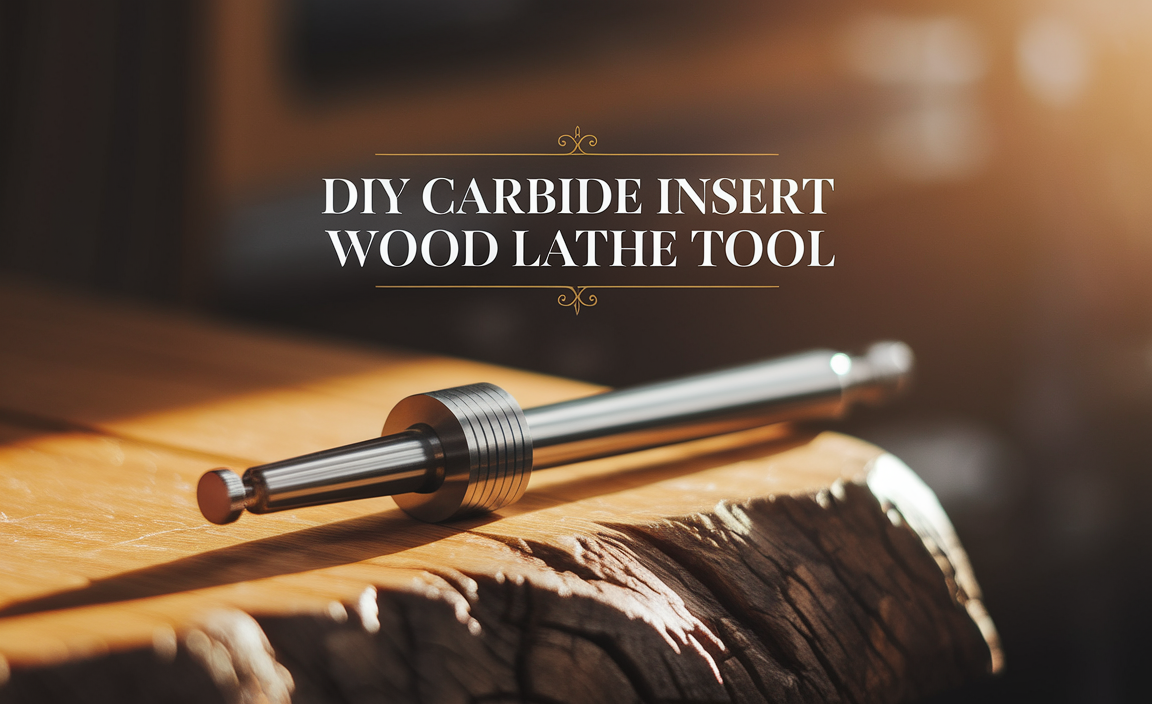Carbide end mills are absolutely essential for successfully machining titanium. Their superior hardness and heat resistance allow them to cut through this tough metal cleanly, preventing the rapid tool wear and material welding that plague softer cutting tools. Using the right carbide end mill ensures precision, efficiency, and a better finish when working with titanium.
Machining titanium can feel like wrestling a bear. It’s a fantastic material with incredible strength, but it can be a real challenge to cut. One of the biggest headaches for beginners is tool wear and material “sticking” to the cutter. This often happens because titanium is not only strong but also has a tendency to transfer heat and gall easily. Traditional high-speed steel (HSS) tools just can’t stand up to the demands. Don’t worry, though! There’s a hero for this job: the carbide end mill. It’s the secret weapon that makes titanium machining much smoother and more predictable. Let’s dive into why carbide is so vital and how to pick the right one.
The Toughness of Titanium and Why Your Tools Matter
Titanium alloys, especially the common Grade 5 (Ti-6Al-4V), are aerospace darlings for a reason. They offer an amazing strength-to-weight ratio, are highly corrosion-resistant, and can handle extreme temperatures. But guess what makes them so robust? Their chemical makeup and physical properties. These are the same properties that make them incredibly difficult to machine.
Think about it: when a cutting tool engages with metal, friction generates heat. With most materials, this heat dissipates. With titanium, it tends to concentrate at the cutting edge. This heat, combined with titanium’s tendency to chemically react with tool materials, leads to:
- Galling: Titanium can stick to the cutting tool, like a super-strong adhesive. This ruins your workpiece finish and can quickly tear up your tool.
- Work Hardening: As you cut, the surface of the titanium can become even harder, making subsequent cuts even more difficult.
- Rapid Tool Wear: Softer tool materials like HSS will dull and wear down incredibly fast, leading to poor surface finish and inaccurate dimensions.
- Heat Buildup: Excessive heat can warp your workpiece or even damage the temper of the titanium.
This is where the right tooling becomes not just important, but absolutely critical. You need something that can outlast and outperform standard cutting tools. Enter the carbide end mill.
What Makes Carbide the Champion for Titanium?
Carbide, specifically tungsten carbide, is a composite material created by bonding tungsten carbide particles with a binder, usually cobalt, and then sintering it under high pressure and heat. The result is a material that is incredibly hard and has excellent heat resistance. Here’s why that’s perfect for titanium:
- Stays sharp longer due to its high hardness.
- Resists the high temperatures generated during titanium machining.
- Cuts more efficiently, reducing galling and work hardening.
- Offers a longer tool life, making your machining more economical.
For a beginner, using a carbide end mill means fewer headaches, better results, and a more enjoyable machining experience. It’s one of the most significant upgrades you can make when tackling tougher materials.
Choosing the Right Carbide End Mill for Titanium
Not all carbide end mills are created equal, especially when you’re aiming for titanium. You need to consider a few key features. Let’s break down the specifications and what they mean for your titanium machining:
Material: Carbide Grades
While we’re talking “carbide,” there are different grades and compositions. For general-purpose machining, a standard tungsten carbide (often referred to as “sub-micron” or “micro-grain” carbide) is usually sufficient. These grades offer a good balance of hardness and toughness.
For especially demanding applications or very hard titanium alloys, you might look for specialized grades, but for most beginner and hobbyist uses with common titanium alloys like Grade 5, a good quality general-purpose carbide will work wonders.
Geometry: The Cutting Edges and Flutes
The design of the end mill’s cutting edges and flutes plays a huge role:
- Number of Flutes: For roughing (removing material quickly) titanium, 2-flute or 4-flute end mills are common. 2-flutes provide better chip clearance, essential for sticky materials like titanium. 4-flutes offer a smoother finish and can handle slightly higher feed rates in some situations if chip evacuation isn’t hindered. For finishing, 4-flute or more can provide excellent surface finishes. Beginners often find 4-flute end mills to be a versatile starting point, balancing chip evacuation and finish.
- Helix Angle: A higher helix angle (e.g., 30-45 degrees) generally provides a sharper cutting action, which is beneficial for milling softer or gummy materials like titanium. It also helps with chip evacuation and reduces the tendency for the tool to chatter.
- End Cut Type: Most end mills are “square” or “corner radius.” A square end mill is good for general cutting. A small corner radius can add strength to the cutting edge and help prevent chipping, especially when plunging or taking heavy cuts.
Coatings: The Secret Armor
Coatings are applied to the surface of carbide end mills to enhance their performance, especially for difficult materials. For titanium, coatings are a game-changer:
- Zirconium Nitride (ZrN): This is a great starting point for titanium. It provides a low-friction, lubricious surface that helps prevent material buildup (galling) and offers good heat resistance and wear resistance.
- Titanium Aluminum Nitride (TiAlN) or Aluminum Titanium Nitride (AlTiN): These are high-performance coatings that are excellent for high-temperature applications. They form a tough, wear-resistant, and heat-dissipating aluminum oxide layer when they reach a certain temperature during cutting. While they can be very effective, they require proper application and cutting parameters, and they work best with flood coolant or a high-quality mist system to manage the heat properly.
- Diamond-Like Carbon (DLC): These coatings offer extremely low friction and excellent wear resistance, making them ideal for gummy materials. However, they are often more expensive and may require specific machine setups.
For beginners working with titanium, a ZrN-coated end mill is an excellent, forgiving choice. It provides significant protection against galling and wear without being overly sensitive to coolant application.
Size and Style: Getting Specific
When you look up end mills for titanium, you’ll see specific dimensions and types. Let’s focus on a common, highly effective configuration:
- Diameter: Common diameters range from 1/8 inch up to 1 inch or more. For smaller parts or intricate work, 1/8 inch or 1/4 inch are popular. For general milling and facing, 1/2 inch or 3/4 inch are robust choices.
- Shank Diameter: This is the part that goes into your tool holder. For a given tool diameter, the shank is often the same size (e.g., a 1/2 inch end mill has a 1/2 inch shank). However, you might find end mills with a reduced shank to fit into smaller collets or holders if needed, though this is less common for standard operations.
- Length: End mills come in various lengths. “Standard” length is typical. “Stub” or “extra-short” length end mills are designed for faster machining and greater rigidity, especially when taking deeper cuts. For titanium, rigidity is key, so a stub length end mill can be highly beneficial. It minimizes tool deflection by providing a shorter, more robust tool.
- Form: “Square end” for general cutting, “ball nose” for contours and 3D shapes, and “corner radius” for added edge strength.
A prime example of a highly effective end mill for titanium, especially for beginners, would be a: <strong>Carbide end mill 1/8 inch 1/2 shank stub length for titanium grade 5 heat resistant</strong>. Let’s break this down:
- Carbide: The core material, essential for hardness.
- 1/8 inch: The cutting diameter. Great for detail work or smaller components.
- 1/2 shank: The diameter of the part that fits into the collet or tool holder. This is a common size for smaller end mills.
- Stub length: This means the tool is shorter than a standard length end mill. The flute length is proportionally shorter than the overall tool length. This increased rigidity drastically reduces chatter and deflection, which is invaluable when milling tough materials like titanium.
- For Titanium / Grade 5: Indicates it’s designed or recommended for titanium alloys.
- Heat Resistant: Refers to the carbide material and/or coatings that help it withstand the high temperatures of titanium machining.
This combination of features creates a tool that is robust, rigid, and built to handle the challenges of titanium.
Essential Practices for Machining Titanium with Carbide End Mills
Simply having the right carbide end mill isn’t the whole story. How you use it is just as crucial. Think of it as a dance between the tool, the machine, and the material.
1. Cutting Speed and Feed Rate: The Sweet Spot
This is often the most intimidating part for beginners. Titanium needs to be cut at relatively slow surface speeds (SFM or m/min) compared to softer metals like aluminum. Fast speeds generate too much heat, which we want to avoid.
- Surface Speed (SFM): For titanium with carbide end mills, you might be looking at ranges from 30-100 SFM (20-60 m/min) depending on the specific alloy, coating, and coolant. Always start at the lower end of recommended ranges.
- Feed Rate: This is how fast the tool moves through the material. A consistent, healthy chip load is key. Aim for chips that are thin and curling, not powdery or wispy. A typical chip load might range from 0.001″ to 0.005″ per tooth, depending on the end mill diameter and the material.
Why Slow Speeds and Consistent Feed are Critical:
When you cut too fast:
- Heat builds up rapidly at the cutting edge.
- The tool can dull quickly, or the coating can be stripped.
- Titanium is more likely to gall to the tool.
When your feed rate is too slow for the speed:
- The tool rubs rather than cuts, creating friction heat and work hardening.
- You get poor surface finish.
The golden rule is to achieve a “consistent chip load.” This means the tool is actively removing material with each rotation, producing a desirable chip. For a specific carbide end mill, consult the manufacturer’s data for recommended speeds and feeds, or use reliable machining calculators. Always start conservatively and listen to your machine and your chips.
2. Coolant/Lubrication: Your Best Friend
Machining titanium without adequate cooling and lubrication is a recipe for disaster. The heat generated is immense, and without a way to dissipate it, the tool and workpiece suffer.
- Flood Coolant: A generous flow of high-quality coolant is ideal. It cools the cutting zone, lubricates the tool, and flushes away chips. Soluble oil or semi-synthetic coolants are good choices.
- Mist Coolant: For hobbyist machines or situations where flood coolant is impractical, a mist coolant system can be very effective. It delivers a fine spray of coolant and air directly to the cutting zone.
- Specific Lubricants: For very difficult cuts or when you can’t use flood/mist, specialized cutting fluids designed for titanium or difficult alloys can be used. Apply them directly to the cutting edge.
The coolant doesn’t just cool; it also lubricates, reducing friction and the chances of galling. For titanium, you want a lubricant that is highly effective under extreme pressure.
3. Rigidity and Setup: Stability is Key
Titanium is unforgiving of chatter and vibration. Any looseness in your setup will be amplified.
- Tool Holder: Use a high-quality tool holder, preferably a one with excellent runout characteristics like a shrink fit holder or a high-precision collet chuck. A standard R8 collet can work, but ensure it’s clean and the collet nut is properly tightened.
- Workholding: Secure your titanium workpiece VERY firmly. Use sturdy vises with appropriate pressure distribution, or fixture it securely if possible. Avoid any possibility of the workpiece shifting.
- Machine Rigidity: Ensure your milling machine itself is in good condition with no play in the ways or spindle bearings.
- Short Tool Stickout: Keep the amount of end mill that is not supported by the collet and spindle as short as possible. This is where using a “stub length” end mill really shines. A shorter tool is a stiffer tool.
4. Depth of Cut and Stepover: Work Smart
Don’t try to hog out huge amounts of material at once. Titanium requires a more delicate approach.
- Depth of Cut (DOC): Start with a shallow depth of cut. For roughing, you might take a DOC of 0.050″ to 0.100″ (1.2mm to 2.5mm) with a 1/2″ end mill, depending on machine power and rigidity. For finishing, it will be much shallower.
- Stepover: This is how much the cutter moves sideways for each pass. For efficient material removal, especially in pockets, a stepover of 30-50% of the tool diameter is common. For finishing, a smaller stepover (e.g., 10-20%) will give a better surface finish.
- Climb Milling vs. Conventional Milling: For titanium, climb milling is often preferred. In climb milling, the cutter rotates in the same direction as it feeds into the material. This results in a shearing action, thinner chips, and less tendency for the tool to dig in, which reduces tool stress and can improve surface finish.
5. Chip Evacuation: Keep it Clean
Titanium chips can be stringy and tend to stick. If chips aren’t cleared from the flutes, they can recut, causing heat and tool damage. Ensure your coolant is doing its job, or if using air blast, consider how it’s directed. For deep pockets, peck drilling moves can help clear chips.
When to Consider Specific Carbide End Mills for Titanium
While a general-purpose carbide end mill with a good coating is a great start, here’s when you might look for something more specialized:
- High-Volume Production: If you’re making many parts, investing in high-performance, specifically coated end mills designed for titanium can significantly reduce cycle times and improve tool life.
- Extremely Hard Titanium Alloys: Some specialized titanium alloys are even tougher than Grade 5. These might benefit from end mills with enhanced geometries or even specialized carbide grades paired with advanced coatings like DLC.
- Very Tight Tolerances and Finishes: While carbide is good, achieving mirror finishes on titanium might require dedicated finishing end mills with very sharp cutting edges, specific corner radii, and precise geometries.
- Multi-Axis Machining / Complex Contours: For 5-axis machining or complex 3D contours, ball-nose end mills with multiple flutes and optimized geometries are crucial. The stub length is still beneficial here for rigidity.
Example: Machining Titanium Grade 5 (Ti-6Al-4V)
Let’s put this into practice. Imagine you need to machine a pocket in a piece of Titanium Grade 5 (Ti-6Al-4V) using a 1/8″ stub length, 4-flute, ZrN-coated carbide end mill with a 1/2″ shank.
Here’s a sample starting point, but remember to always verify with manufacturer data and adjust based on your observations:
- Tool: 1/8″ Carbide, 4-Flute, ZrN Coated, Stub Length, 1/2″ Shank
- Material: Titanium Grade 5 (Ti-6Al-4V)
- Spindle Speed: 2000 RPM (This gives approximately 65 SFM for a 1/8″ diameter, which is a good starting point for ZrN coating)
- Feed Rate: 0.0015″ per tooth (This gives 2000 RPM 4 flutes 0.0015″ chip load = 12 IPM feed rate)
- Depth of Cut: 0.050″
- Stepover: 0.040″ (31% of diameter)
- Coolant: Flood coolant or mist coolant is highly recommended.
- Operation: Climb milling
Why this configuration?</





